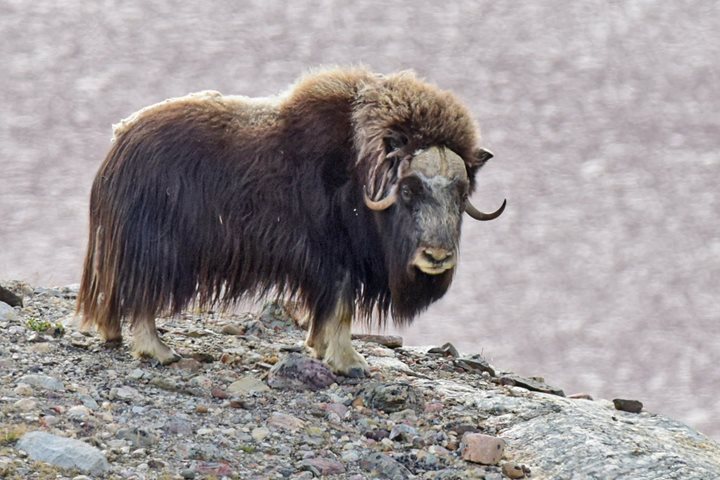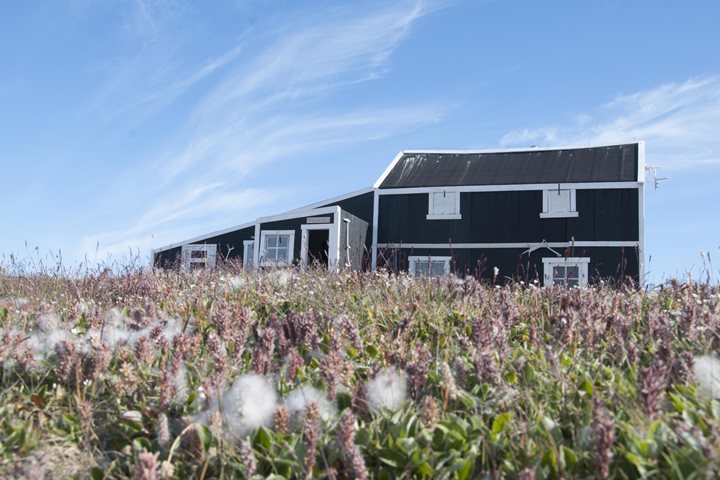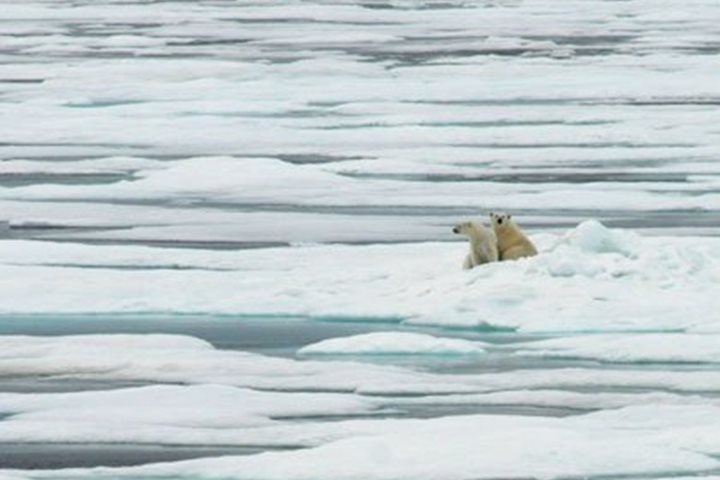In a land renowned for violent weather and unpredictable seas we awoke to conditions wholly outside our expectations. Following a calm passage from Iceland to Greenland’s southern coast, our assumption was that our lucky weather window was over – only to be humbled yet again by more calm seas and perfect visibility today.
Dotting the horizon, like a string of distant pearls, our northbound transit towards Nuuk, Greenland’s capital and largest city, was to be in the presence of icebergs. Large, luminous and seemingly affixed to the landscape, these floating cathedrals of ice not only lined our path north but, almost imperceptibly, are making their own journey up the west coast of Greenland as well. No doubt the prodigy of large tidewater glaciers spilling off of Greenland’s eastern coast, the icebergs in our company today were well along on their journey from their calving grounds in the east to their eventual demise south of Nova Scotia’s warmer coastal waters. Like most of the ice on Greenland’s eastern coast, the prevailing currents pull anything afloat in a southerly direction until reaching the southern tip of the island before rounding the corner where the West Greenland Current nudges anything afloat towards the north again. It is this aptly named West Greenland Current that brings all Greenlandic ice north along its western flanks before the upper reaches of the Labrador Current, hundreds of miles to our north, begin to draw the ice back south again along Arctic Canada’s eastern flanks.
It is this long, sinuous journey through turbulent seas and strong currents that creates icebergs of the shape and beauty that we witnessed today. Without question the most magnificent of all drew our attention from miles away. Tucked close to shore, a large ice arch began to reveal itself just past midday, triggering a rash of excitement and eagerness to take a closer look. With the good graces of our captain we veered five miles off course for a closer look at what turned out to be the tallest arched iceberg I have personally ever witnessed. Looming at least 80 feet over the millpond below, this veritable cathedral became our frame to the landscape beyond as we made two long, slow passes, like a moon orbiting its magnetically beautiful planet. With deep blues overhead, soft white clouds on the horizon and reflections of both below the entire scene could not have been better choreographed.
To round off the experience a few whales made distant passes throughout the day in addition to a massive pod of harp seals. Likely hundreds of individuals strong, this mass could be seen from miles off as a dark line across the water’s surface. Upon closer inspection their porpoising heads gave them away as harp seals and gave us an idea as to the productivity possible in the far northern regions.
With any luck we will continue to cross paths with wildlife on this ambitious itinerary of ours, as well as the fine weather and sculpted ice that has made this day one to remember.









